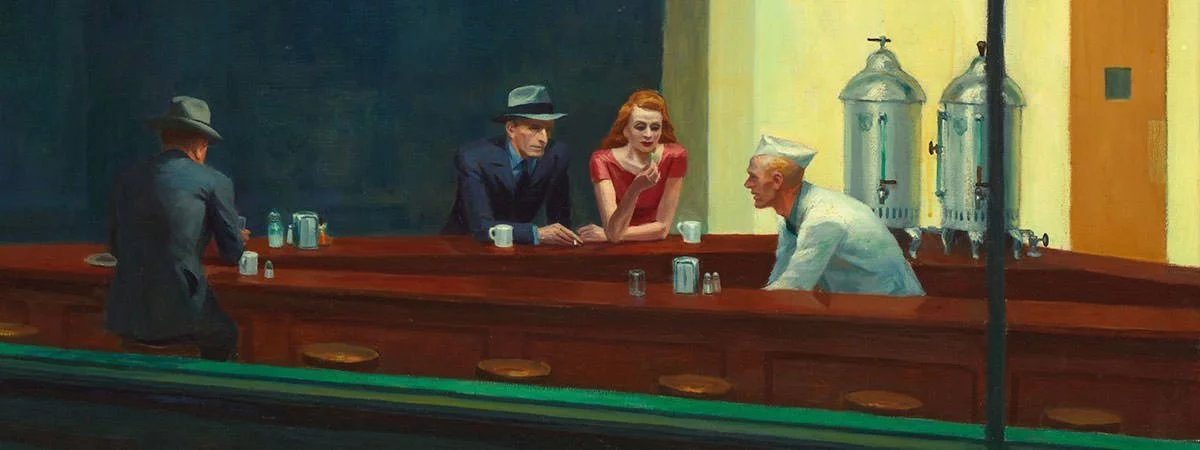The Realism art movement originated in France in the 1850s. Led by Gustave Courbet and Jean-François Millet, the Realists rejected the glorification of the past and exaggerated emotionalism of Romanticism; and instead portrayed the people and situations of the present with uncompromising accuracy. Many of the now renowned realist paintings were initially criticized and caused controversies as they put in front of the art world subject matters and situations which had till then been avoided or considered inappropriate. Realism shook the art world with its shocking nudes; depiction of the struggling working class and of inhumane labor; and portrayal of the isolation of the individual in modern society. Here are the 10 most famous paintings of the Realism art movement.
#10 The Horse Fair
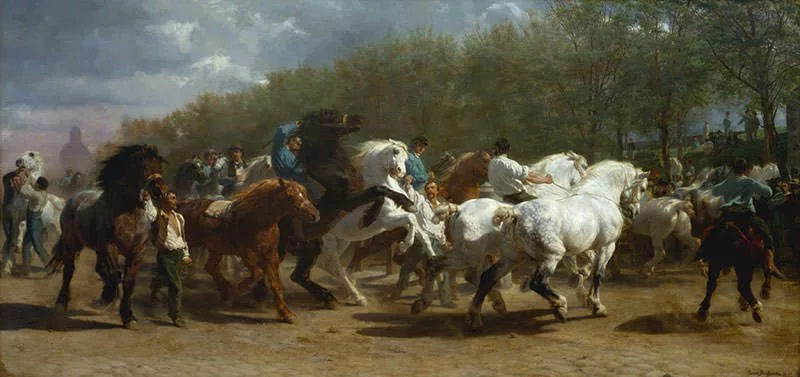
| French Title: | Le marché aux chevaux |
| Location: | The MET, New York City, U.S. |
| Artist: | Rosa Bonheur |
| Year: | 1853 |
Rosa Bonheur, often called the most acclaimed female painter of the 19th century, is most known for her paintings of animals. Her most renowned work, The Horse Fair, depicts the horse market held at Boulevard de l’Hopital in Paris. Bonheur attended the market dressed as a man for a year and a half making sketches from which she created this masterpiece. After being displayed at the Paris Salon in 1853, The Horse Fair was shown throughout Europe and the U.S.; and it brought international fame and recognition for Bonheur. Even Queen Victoria had high praise for the painting. Le marché aux chevaux has been described by the Metropolitan Museum as one of its best known works of art.
#9 Barge Haulers on the Volga
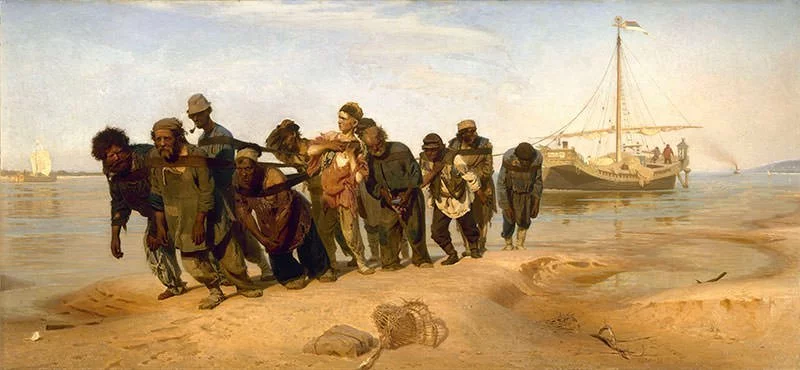
| Russian Title: | Burlaki na Volge |
| Location: | State Russian Museum, Saint Petersburg, Russia |
| Artist: | Ilya Repin |
| Year: | 1873 |
This painting depicts 11 laboring men dragging a barge on the Volga River. It is inspired by scenes witnessed by Ilya Repin while holidaying on the Volga in 1870. The characters portrayed are based on actual people whom the artist met while preparing the work. Barge Haulers won international praise for its realistic portrayal of the hardships endured by working class men. It launched the career of Ilya Repin and established him as a master of documenting social inequality. The painting was purchased by Grand Duke Vladimir Alexandrovich and exhibited widely throughout Europe as a landmark of Russian realist painting. Barge Haulers is the most renowned masterpiece of the most acclaimed Russian artist of the 19th century.
#8 The Gross Clinic

| Location: | Philadelphia Museum of Art, U.S. |
| Artist: | Thomas Eakins |
| Year: | 1875 |
The leading American realist of his time, Thomas Eakins is best known for bringing out the individuality of his models in his portraits. Samuel D. Gross was a renowned American surgeon. This painting depicts Dr Gross presiding over an operation to remove part of a diseased bone from a patient’s thigh. He is operating before his students of Jefferson Medical College in Philadelphia. Eakins has added a self portrait to the scene and he can be seen at the right-hand side of the painting, next to the tunnel railing, with a white cuffed sleeve. Admired for its uncompromising realism, The Gross Clinic is considered by many art historians to be one of the best American paintings ever made. It is “celebrated as a great 19-century medical history painting, featuring one of the most superb portraits in American art”.
#7 The Angelus
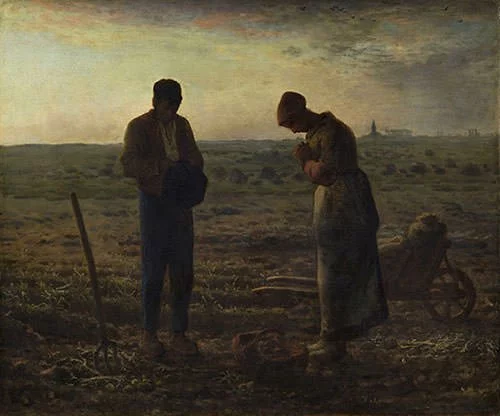
| French Title: | L’Angelus |
| Location: | Musée d’Orsay, Paris, France |
| Artist: | Jean-Francois Millet |
| Year: | 1859 |
The most prominent figure of the French Realism movement after Gustave Courbet, Jean-Francois Millet is famous for his depictions of peasants. The Angelus is the last of his iconic trio of paintings after The Sower and The Gleaners. The Angelus is a catholic devotional prayer. This painting depicts two peasants bowing down to say the Angelus at the end of a day’s work. A church can be seen on the horizon and it is the ringing of the bell from the church that has led to the peasants stopping their work to say the prayer. The initial title of the work was “Prayer for the Potato Crop” as the scene depicted shows a potato field in Barbizon, France. The Angelus, a masterpiece of social realism, was also one of the most widely reproduced religious paintings in 19th century France.
#6 The Origin of the World
THIS IMAGE CONTAINS NUDITY. YOU MAY VIEW IT HERE AT WIKIPEDIA
| French Title: | L’Origine du monde |
| Location: | Musée d’Orsay, Paris, France |
| Artist: | Gustave Courbet |
| Year: | 1866 |
Gustave Courbet was the undisputed leader of French Realism and the key figure responsible for the rise of the movement. At the time he created this work, eroticism and nudity in art was only acceptable in mythological and dreamlike paintings. Courbet’s realism pushed the limits of what was considered presentable. A close-up view of the genitals and abdomen of a naked woman, lying on a bed with legs spread; L’Origine du monde still has the power to shock the viewer and despite the laxity in moral standards that has occurred during the one and a half century since it was created, the painting still manages to create controversy leading to its censorship on numerous occasions.
#5 Christina’s World
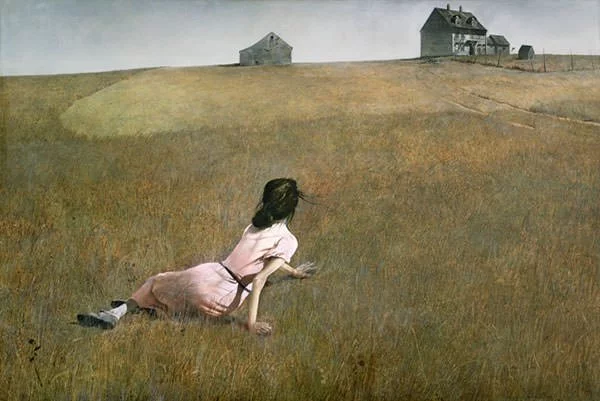
| Location: | Museum of Modern Art, New York City, U.S. |
| Artist: | Andrew Wyeth |
| Year: | 1948 |
Created by one of the leading U.S. artists of the time, Christina’s World is among the most famous American paintings of the middle 20th century. It depicts a woman lying on the field looking at a gray house on the horizon. The woman in the painting is Anna Christina Olson. She was Wyeth’s neighbor in South Cushing, Maine and she suffered from a degenerative muscular disorder that prevented her from walking. Wyeth was inspired to create the masterpiece when he saw her crawling across a field from his window. Though it received little attention on first being displayed, Christina’s World grew in popularity over the years. It is now regarded as an icon of American art and one of the most important works of American realism.
#4 The Gleaners
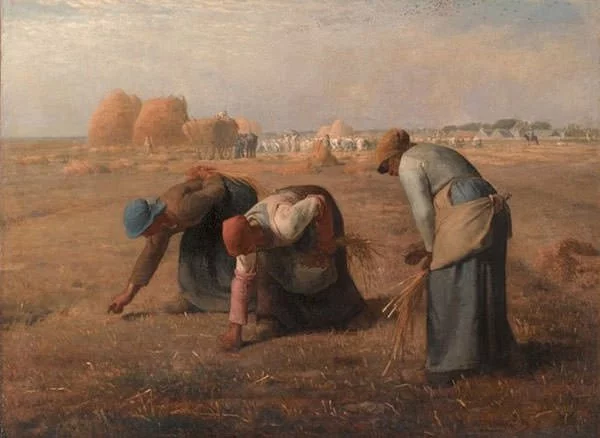
| French Title: | Des glaneuses |
| Location: | Musée d’Orsay, Paris, France |
| Artist: | Jean-Francois Millet |
| Year: | 1857 |
Jean-Francois Millet’s best known works are his trio of paintings which portrayed the lowly peasants in an unprecedented heroic and sympathetic manner. The Gleaners is the most famous of the three paintings and it influenced several later artists including Pissarro, Renoir, Seurat and Van Gogh. It depicts three peasant women gleaning, or collecting leftover crops, from a field of stray grains of wheat after the harvest. Portraying the lowest rank of rural society in a sympathetic light, the painting was severely criticized by the French upper classes on first being displayed. The size of the painting is 33 inches by 44 inches and it was a major point of contention as such an enormous size was generally reserved for religious or mythological subjects.
#3 A Burial At Ornans

| French Title: | Un enterrement à Ornans |
| Location: | Musée d’Orsay, Paris, France |
| Artist: | Gustave Courbet |
| Year: | 1850 |
This painting depicts the funeral of the great-uncle of Gustave Courbet in the small town of Ornans in France. Courbet “painted the very people who had been present at the interment, all the townspeople”. A Burial At Ornans caused a storm on first being displayed at the 1850–51 Paris Salon. Firstly, it is an enormous work, measuring 10 by 22 feet; such an enormous scale had been traditionally reserved for the heroic or religious scenes of history painting; and secondly its unflattering realism without any sentimental narrative shocked the art world. Initially denounced by critics, A Burial At Ornans was one of the major works due to which the public moved away from Romanticism and became interested in the new Realist approach. It is regarded as one of the major turning points of 19th-century French art and Courbet said: “The Burial at Ornans was in reality the burial of Romanticism.”
#2 Nighthawks
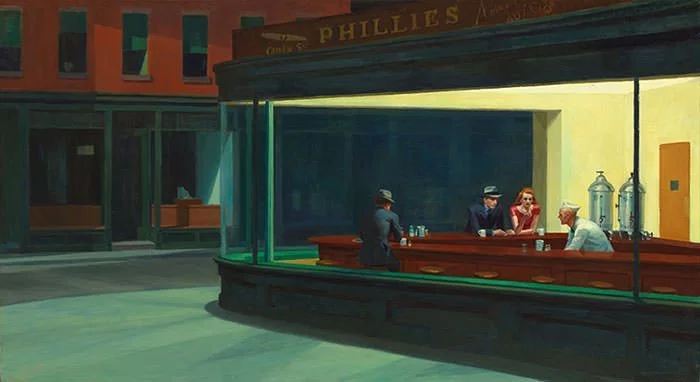
| Location: | Art Institute of Chicago, U.S. |
| Artist: | Edward Hopper |
| Year: | 1942 |
Edward Hopper is best known for revealing the solitude of modern life and forcing the viewer to play a more active role in completing the narrative of artworks. This painting, which portrays people in a downtown diner late at night, was inspired by a restaurant on Greenwich Avenue, the artist’s neighborhood in Manhattan. It has been interpreted as an illustration of the chilling effects of the Second World War and as a portrayal of the isolation of an individual amid the bustle of New York City. The most famous work of Hopper, Nighthawks is one of the most recognizable paintings in American art. It influenced many future American artists and has been widely referenced and parodied in popular culture.
#1 Olympia
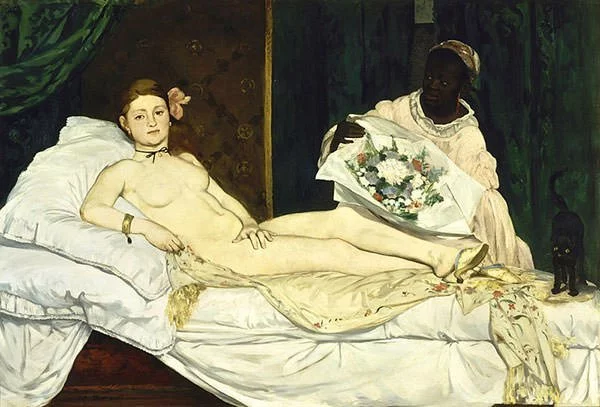
| Location: | Musée d’Orsay, Paris, France |
| Artist: | Édouard Manet |
| Year: | 1863 |
Edouard Manet, though often categorized as an Impressionist, described himself as a Realist. His initial works include some of the most important masterpieces of Realism among which is Olympia. The painting depicts a reclining nude woman attended by a maid. When it was first exhibited at the 1865 Paris Salon, it caused a huge controversy; not because of Olympia’s nudity but because there are a number of details in the painting which identify her as a prostitute. These include the orchid in her hair, her bracelet, pearl earrings and the oriental shawl on which she lies. Also, the painting has a black cat, which traditionally symbolized prostitution. Olympia was inspired by Titian’s Venus of Urbino and several other paintings; but unlike these works, it did not depict a goddess or a court lady but a high-class prostitute. The most famous aspect of the painting is the confrontational gaze of Olympia; which is often referenced as the pinnacle of defiance toward patriarchy. Manet’s Olympia is the most famous Realist painting and perhaps the most famous nude of the 19-century.

